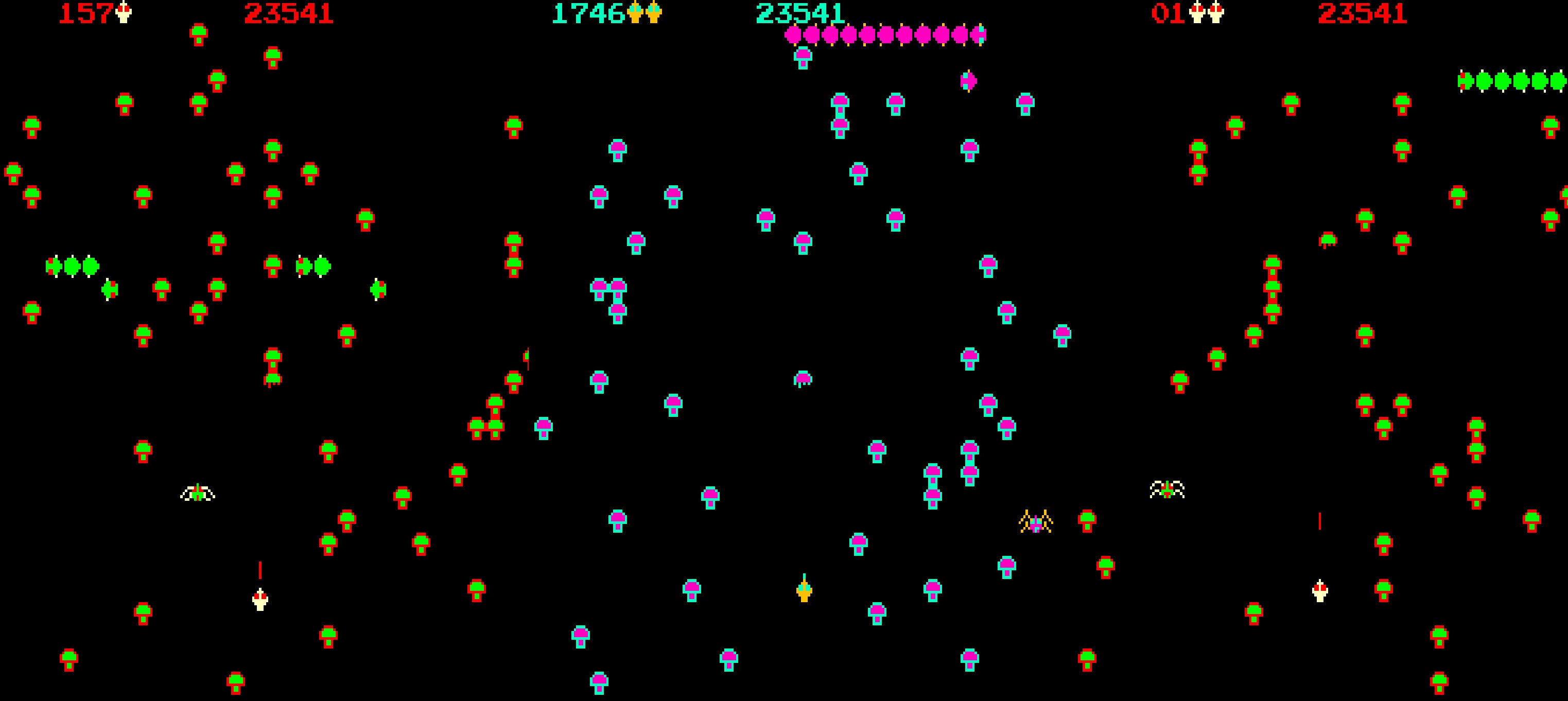Introduction
Released by Atari in 1980, Centipede is one of the most iconic arcade games of its era. Designed by Ed Logg and Dona Bailey, it is celebrated for its engaging gameplay, colorful visuals, and accessibility to players of all skill levels. With its innovative use of a trackball and a unique blend of strategy and action, Centipede became a standout hit that has endured in popularity for over four decades.
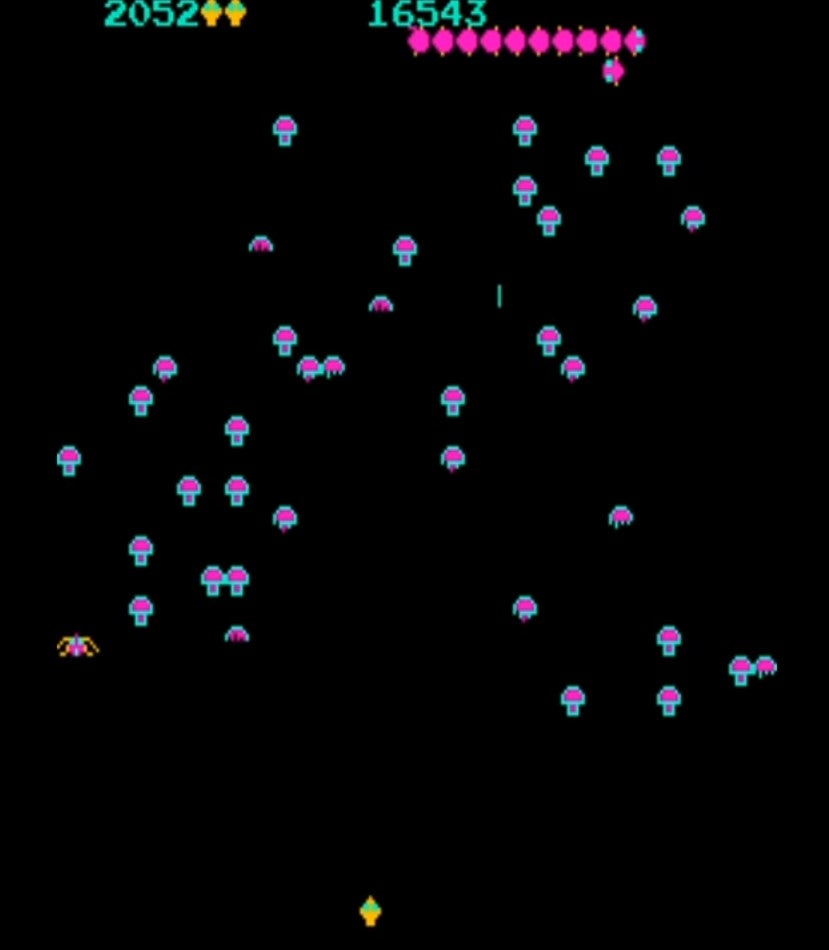
Design and Development
The Creators
- Ed Logg: A veteran Atari designer known for his work on Asteroids and Gauntlet.
- Dona Bailey: One of the few women in the video game industry at the time, Bailey brought a unique perspective to the game’s design, aiming to create a title that would appeal to a broader audience, including women.
Design Philosophy
The game’s combination of approachable mechanics and escalating difficulty made it accessible to casual players while providing a challenge for arcade veterans. Its bright visuals and simple yet addictive gameplay drew players of all demographics, setting a new standard for inclusivity in gaming.
Overview: The Gameplay
In Centipede, players control a shooter at the bottom of the screen and aim to destroy a segmented centipede as it weaves through a field of mushrooms. As the centipede is hit, its segments split, creating smaller and faster pieces. Players must also contend with other enemies, such as spiders, fleas, and scorpions, which add complexity and variety to the gameplay.
The goal is to clear the screen of the centipede while surviving as long as possible, earning points for every enemy destroyed and mushroom removed.
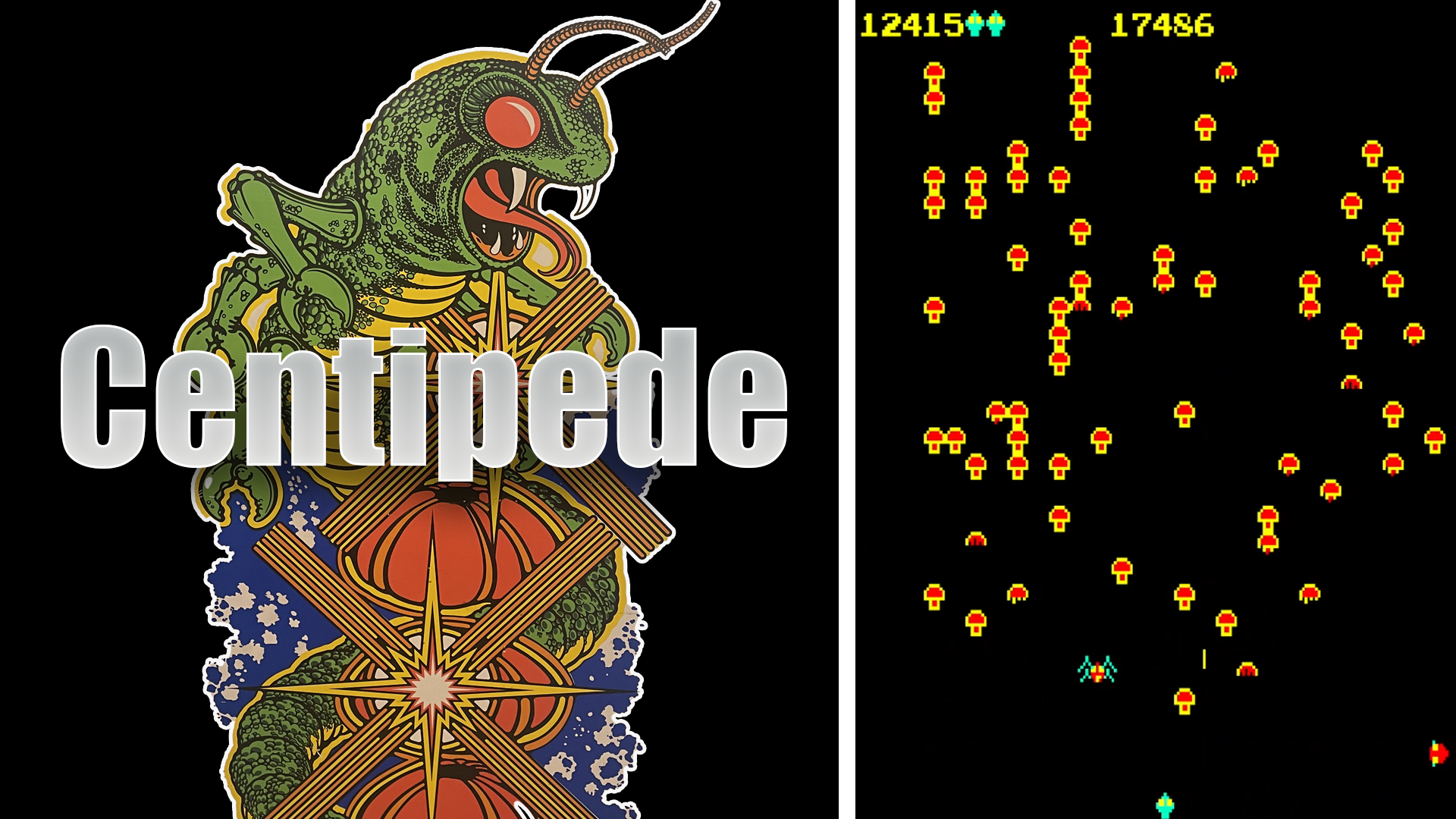
Centipede Gameplay Video
Key Features
1. Trackball Controls
The game’s use of a trackball for player movement was revolutionary at the time. It allowed for precise, fluid motion, enhancing the player’s control and engagement.
2. Colorful Graphics
Centipede was one of the first arcade games to feature vibrant, multi-colored sprites, making it visually appealing and easy to follow during gameplay.
3. Dynamic Gameplay
The combination of the centipede splitting into smaller segments and the random movements of other enemies creates a dynamic and unpredictable challenge.
4. Progressive Difficulty
As players advance, the centipede moves faster, more enemies spawn, and the game becomes increasingly chaotic, testing reflexes and strategy.
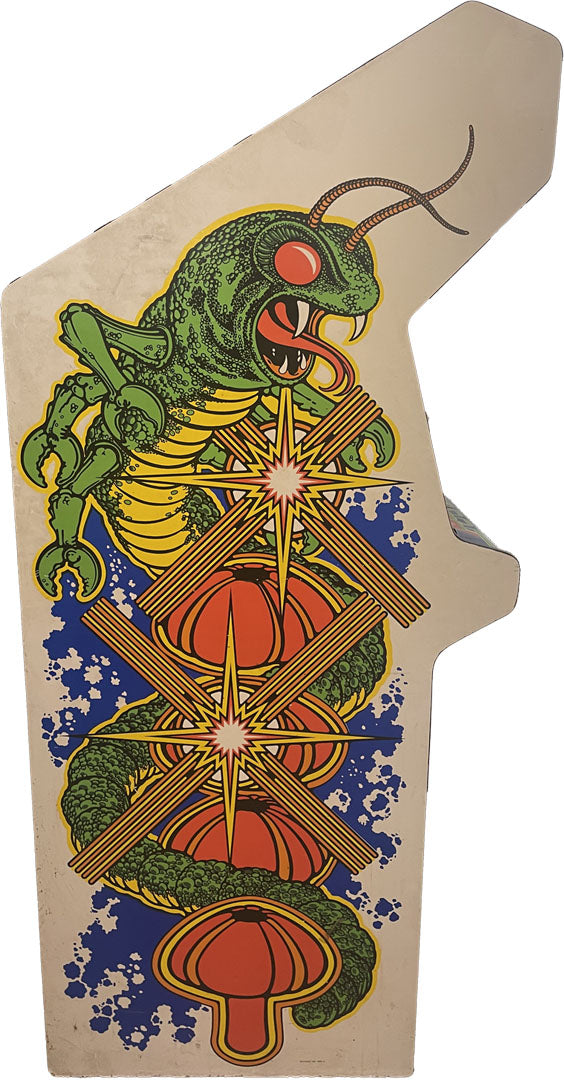
Cultural Impact
Arcade Success
- Centipede was a massive hit in arcades, becoming one of Atari’s most successful games. Its unique controls and engaging gameplay made it a favorite among players, earning millions in revenue during its peak.
Legacy
- The game has been ported to numerous platforms, including the Atari 2600, PC, and modern consoles. It remains a staple in retro gaming collections and continues to influence game design.
- Centipede was followed by a sequel, Millipede, which expanded on the original’s mechanics with new enemies and features.
Pop Culture
- Centipede has appeared in films, TV shows, and even inspired modern game designs, cementing its status as a pop culture icon.
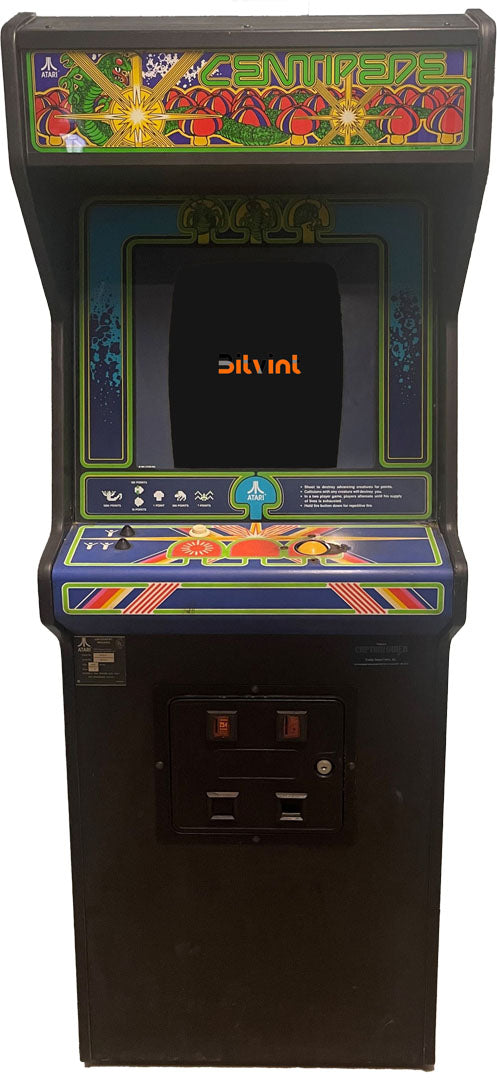
Tips for Players
- Master the Trackball: Practice smooth, precise movements to dodge enemies and aim accurately.
- Prioritize Spiders: Spiders move unpredictably and can end a game quickly—take them out as soon as possible.
- Control the Mushrooms: Clear clusters of mushrooms to slow the centipede’s descent and give yourself more time to react.
- Stay Calm Under Pressure: As the game speeds up, focus on one section of the screen to avoid being overwhelmed.
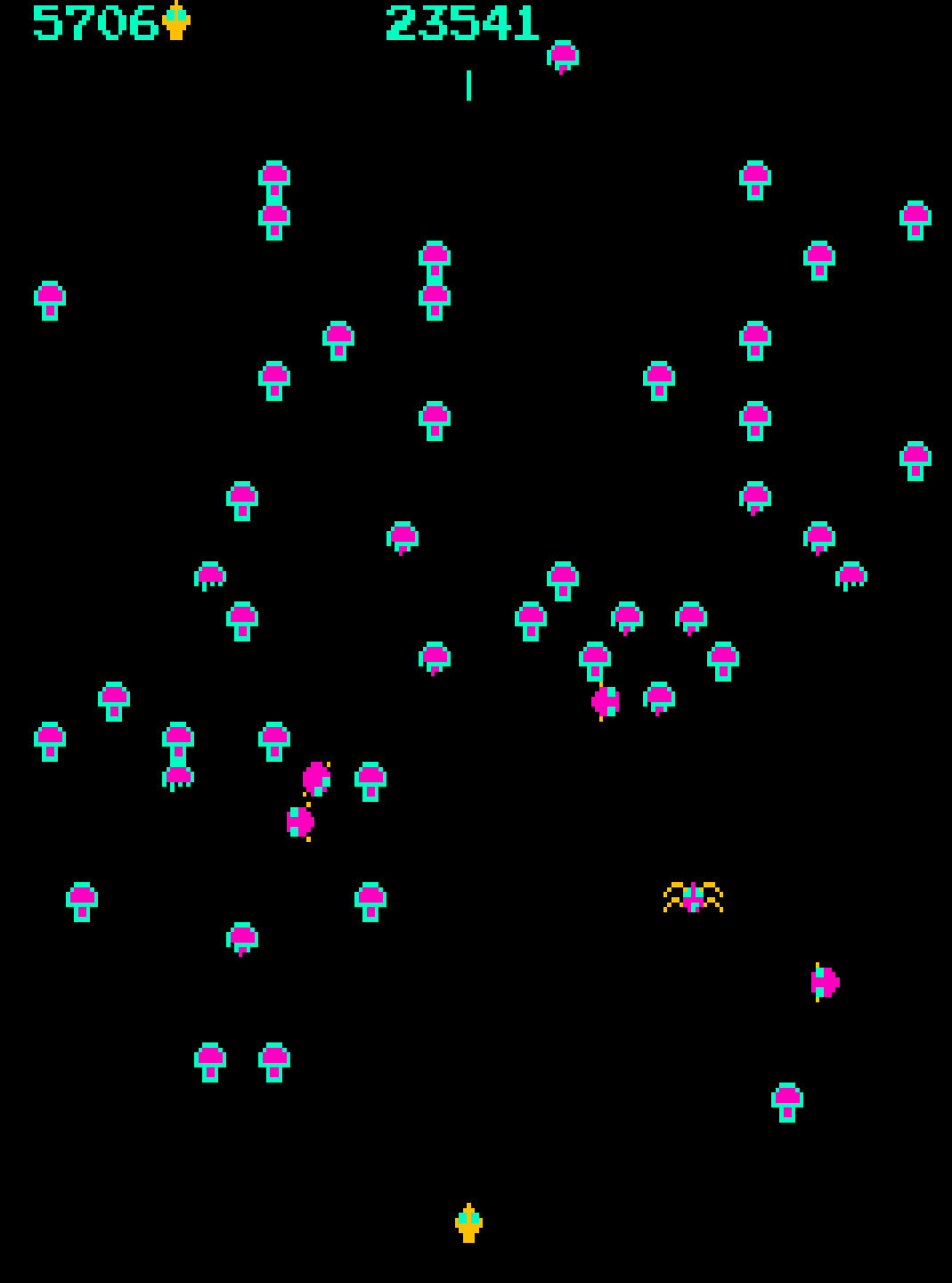
Why Centipede Stands Out
- Inclusive Design: Its simple yet challenging gameplay appealed to both casual and hardcore players.
- Innovative Controls: The trackball provided a level of precision and engagement unmatched by joystick-based games.
- Enduring Appeal: Decades after its release, Centipede remains a favorite in retro arcades and home gaming collections.
Related Pages
Questions you might have:
What is the gameplay concept of "Centipede," and how do players interact with the game?
"Centipede" is a fixed shooter game where players control a ship that moves horizontally at the bottom of the screen. They aim to shoot and eliminate a centipede that moves down the screen, avoiding obstacles and enemies.
What are the different types of enemies and obstacles players encounter in "Centipede"?
Players encounter various enemies, including the centipede segments, spiders, fleas, and scorpions. Obstacles include mushrooms that the centipede travels over.
Are there any power-ups or special items that players can use to their advantage in "Centipede"?
Yes, players can shoot DDT bombs to clear mushrooms and enemies, as well as earn extra points. A special item called the Magic Wand allows players to shoot through obstacles.
What strategies or techniques are effective for achieving high scores in "Centipede"?
Strategies involve controlling the centipede's movement by shooting segments and creating safe paths, avoiding collisions with other enemies, and optimizing shooting accuracy.
How did "Centipede" contribute to the arcade gaming scene and the broader gaming industry?
"Centipede" was a commercial success and introduced unique gameplay mechanics, colorful graphics, and trackball controls, influencing the arcade gaming landscape.
Were there any adaptations or sequels to "Centipede" on different gaming platforms?
Yes, "Centipede" was adapted for various home gaming platforms, including Atari 2600, Atari 5200, and more, with sequels like "Millipede" also released.
What unique features or mechanics set "Centipede" apart from other arcade games of its time?
"Centipede" stood out due to its innovative trackball controls, which offered precise aiming, and its distinctive enemies and level design.

